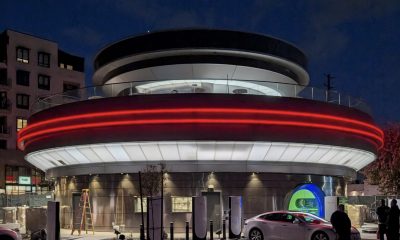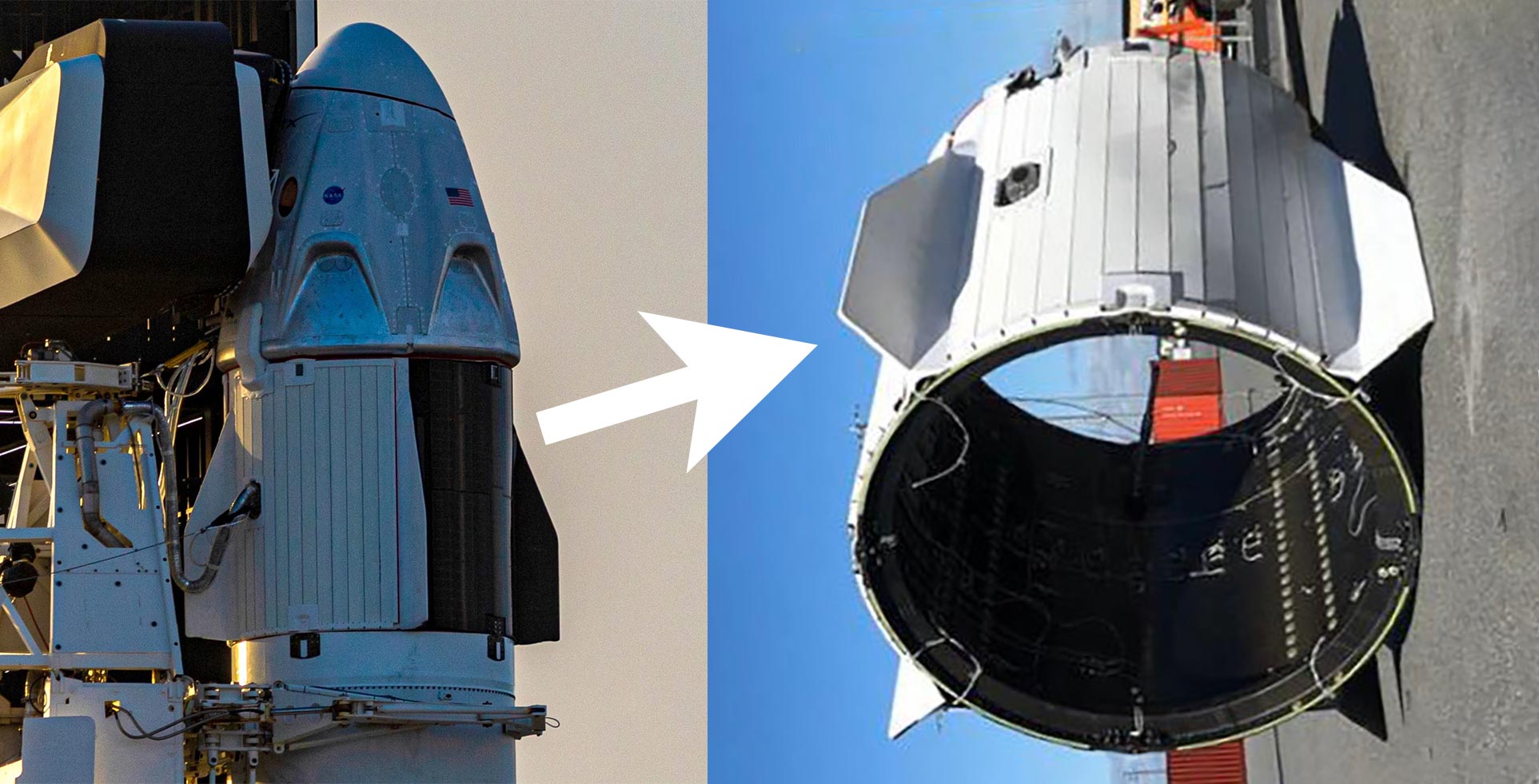

News
SpaceX surprises after recovering spacecraft 'trunk' in one piece
In a surprise twist, SpaceX has recovered an expendable ‘trunk’ that launched with Crew Dragon on its January 19th In-Flight Abort (IFA) test, in which the spacecraft successfully escaped from an exploding Falcon 9 rocket.
While recovering pieces of Dragon’s disposable trunk would not have been shocking, SpaceX has returned this particular Crew Dragon trunk to shore in a condition that can only be described as unscathed. The surprise came first on the evening of January 19th, when two separate SpaceX ships returned to Port Canaveral — first and foremost bringing Crew Dragon capsule C205 back to dry land for inspection and possible reuse. However, a separate ship – GO Navigator – followed the ship carrying Crew Dragon not long after, revealing a shockingly intact Dragon trunk on its deck.
At 10:30 am EST (15:30 UTC) on January 19th, Falcon 9 booster B1046, an expendable upper stage, and the newest Crew Dragon spacecraft lifted off from Kennedy Space Center (KSC) Launch Complex 39A (Pad 39A) on the spacecraft’s second-ever integrated launch. Designed to push Crew Dragon’s abort systems to their limits, the spacecraft ignited its SuperDraco thrusters around 85 seconds after liftoff, soaring away from a supersonic Falcon 9 and triggering the rocket’s catastrophic (but expected) explosion around 10 seconds later.
A bit like pushing against a wall, Crew Dragon had to fight uphill against a continuous supersonic blast of air to escape the Falcon 9 rocket that launched it, likely adding tens of thousands of pounds (several dozen metric tons) of additional pressure spread out over the top of the capsule. The spacecraft and its detachable trunk section – carrying a solar array, radiators, and four fins – appeared to survive the experience without issue.
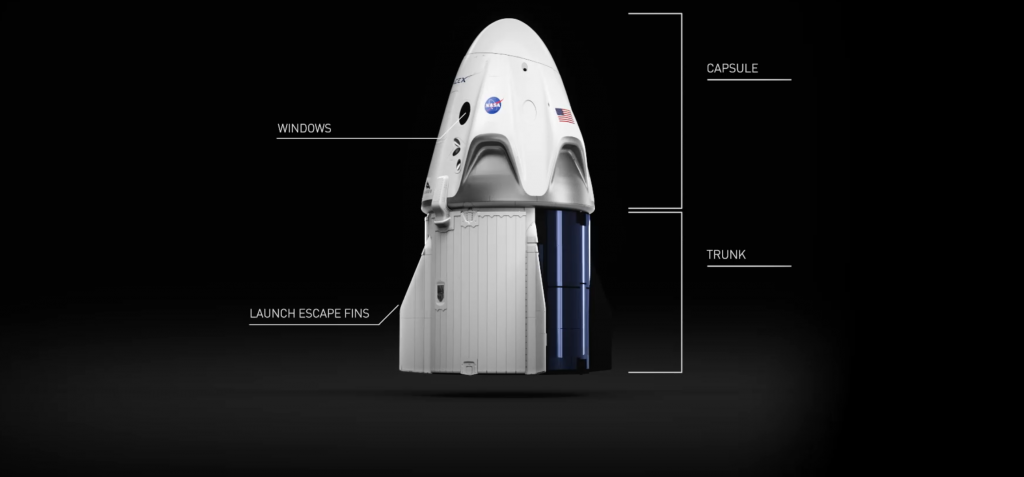
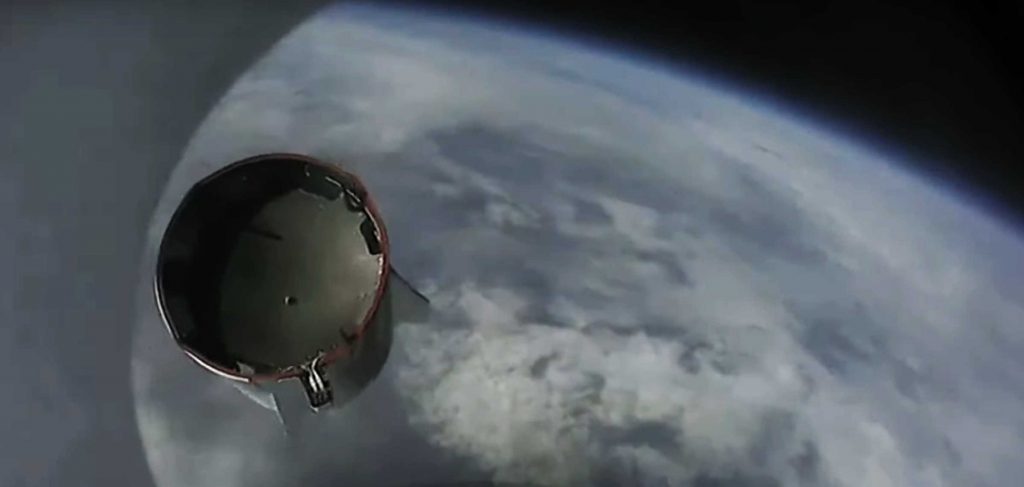
The capsule’s SuperDraco engines shut off after about 10 seconds, leaving the integrated spacecraft to coast to an apogee of ~40 km (25 mi), where it finally detached its trunk (pictured above). Designed to be disposable, Crew Dragon features a trunk functionally similar to the one SpaceX has flown almost 20 times on Cargo Dragon (Dragon 1) missions. Crew Dragon’s trunk looks quite a bit different, stretching taller and featuring an interesting conformal solar array (vs. Dragon 1’s deployable panels), as well as radiators (white rectangular panels) the spacecraft needs to maintain thermal equilibrium while in space.
Nominally, Crew Dragon and Cargo Dragon launch on Falcon 9, reach orbit, and go about their business of delivering astronauts and cargo to and from the International Space Station (ISS). After completing their given mission, the trunk section is eventually detached an hour or two before one last reentry burn, eventually returning the spacecraft to Earth. The trunk is thus left in low Earth orbit (LEO), eventually reentering on its own days, weeks, or months later and vaporizing into plasma before it hits Earth’s surface.
While it’s thus surprising that Crew Dragon C205’s trunk section – built primarily out of carbon composites like Falcon 9’s payload fairing and interstage – survived its In-Flight Abort mission more or less intact, the unexpected recovery sadly doesn’t mean that SpaceX has any plans to try to routinely recover or reuse the hardware. If Dragon trunks detached well before orbit, SpaceX might reconsider, but that would defeat their purpose of providing Dragons with power and thermal management while in orbit.
Surviving a terminal-velocity ocean splashdown is certainly no mean feat, but surviving an orbital-velocity atmospheric reentry is magnitudes more challenging, although SpaceX is certainly cognizant of the trade-off. Starship, for example, is expected to include thermal management and power generation systems as an integral part of the (nominally) fully-reusable spaceship and upper stage. At the scale of Crew Dragon, it’s just hard to rationalize doubling or tripling the mass of the spacecraft’s trunk just to tack on a complex recovery system.
All told, both NASA and SpaceX have since indicated that preliminary telemetry from Crew Dragon’s In-Flight Abort test paints an extremely positive picture and effectively confirmed that the test was a total success. With a little luck, it’s safe to say that Crew Dragon will be sacrificing a trunk section in orbit before returning NASA astronauts to Earth just a few months from now.
Check out Teslarati’s Marketplace! We offer Tesla accessories, including for the Tesla Cybertruck and Tesla Model 3.
Elon Musk
Elon Musk reveals SpaceX’s target for Starship’s 10th launch
Elon Musk has revealed SpaceX’s target timeline for the next Starship launch, which will be the tenth in program history.
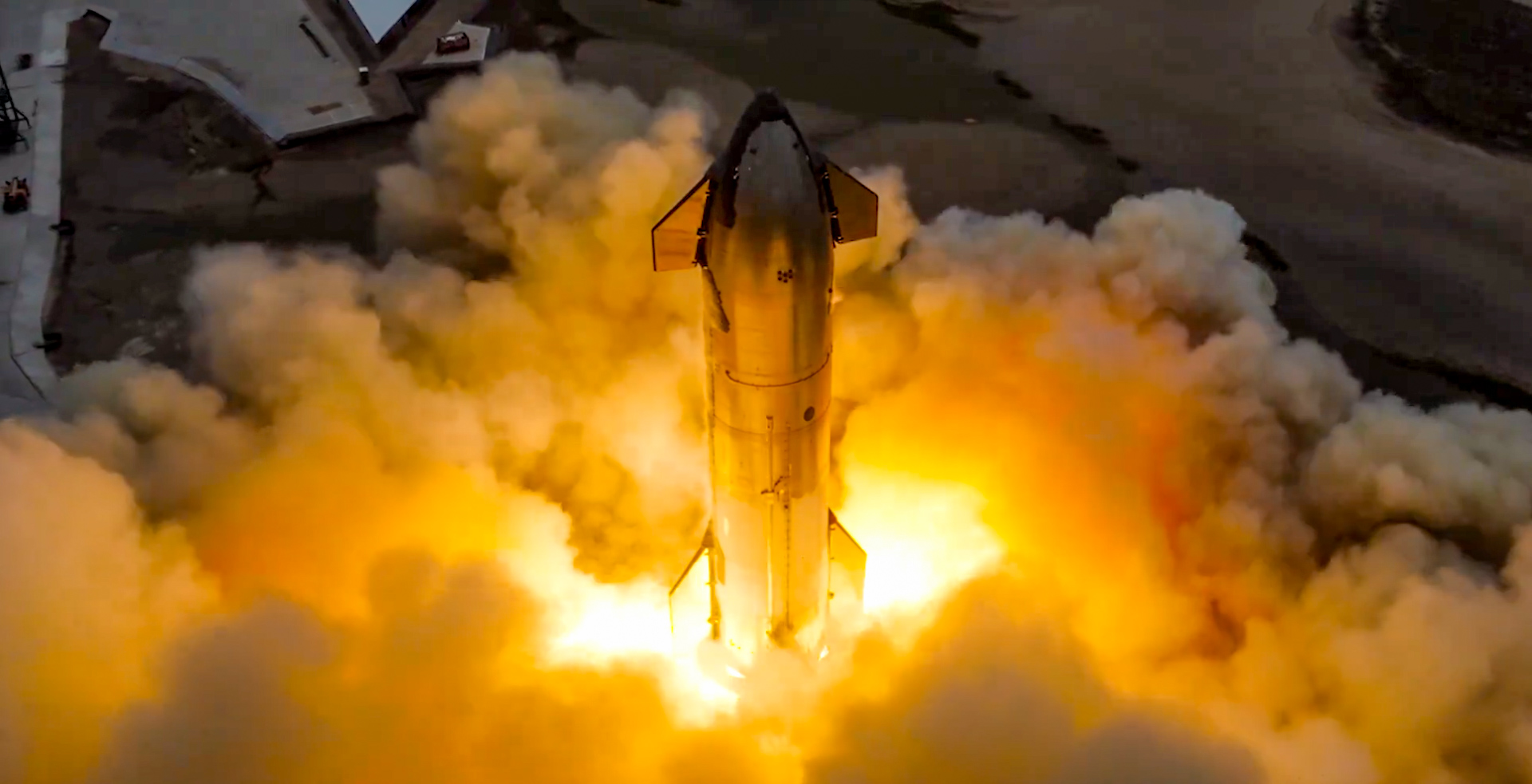
Elon Musk has revealed SpaceX’s target timeline for the next Starship launch, which will be the tenth in program history.
Musk says SpaceX is aiming for a timeline of roughly three weeks from now, which would come about ten weeks after the previous launch.
Coincidentally, it would bring the two launches 69 days apart, and if you know anything about Elon Musk, that would be an ideal timeline between two launches.
🚨 Just wanted you to know, Starship 10’s projected test flight date, according to Grok, is August 4.
Starship’s ninth test flight took place on May 27.
August 4 is 69 days after May 27.
Do with that what you will. 🚀 https://t.co/IISpT08rIy
— TESLARATI (@Teslarati) July 16, 2025
SpaceX is coming off a test flight in which it lost both the Super Heavy Booster and the Upper Stage in the previous launch. The Super Heavy Booster was lost six minutes and sixteen seconds into the flight, while SpaceX lost communication with the Ship at 46 minutes and 48 seconds.
Musk is aiming for the tenth test flight to take place in early August, he revealed on X:
Launching again in ~3 weeks
— Elon Musk (@elonmusk) July 14, 2025
This will be SpaceX’s fourth test flight of the Starship program in 2025, with each of the previous three flights bringing varying results.
IFT-7 in January brought SpaceX its second successful catch of the Super Heavy Booster in the chopstick arms of the launch tower. The ship was lost after exploding during its ascent over the Turks and Caicos Islands.
IFT-8 was on March 6, and SpaceX caught the booster once again, but the Upper Stage was once again lost.
The most recent flight, IFT-9, took place on May 27 and featured the first reused Super Heavy Booster. However, both the Booster and Upper Stage were lost.
The Federal Aviation Administration (FAA) hit SpaceX with a mishap investigation for Flight 9 on May 30.
Elon Musk
Elon Musk confirms Tesla is already rolling out a new feature for in-car Grok
Tesla is already making in-car Grok more robust with a simple but effective feature that CEO Elon Musk says is “coming.”
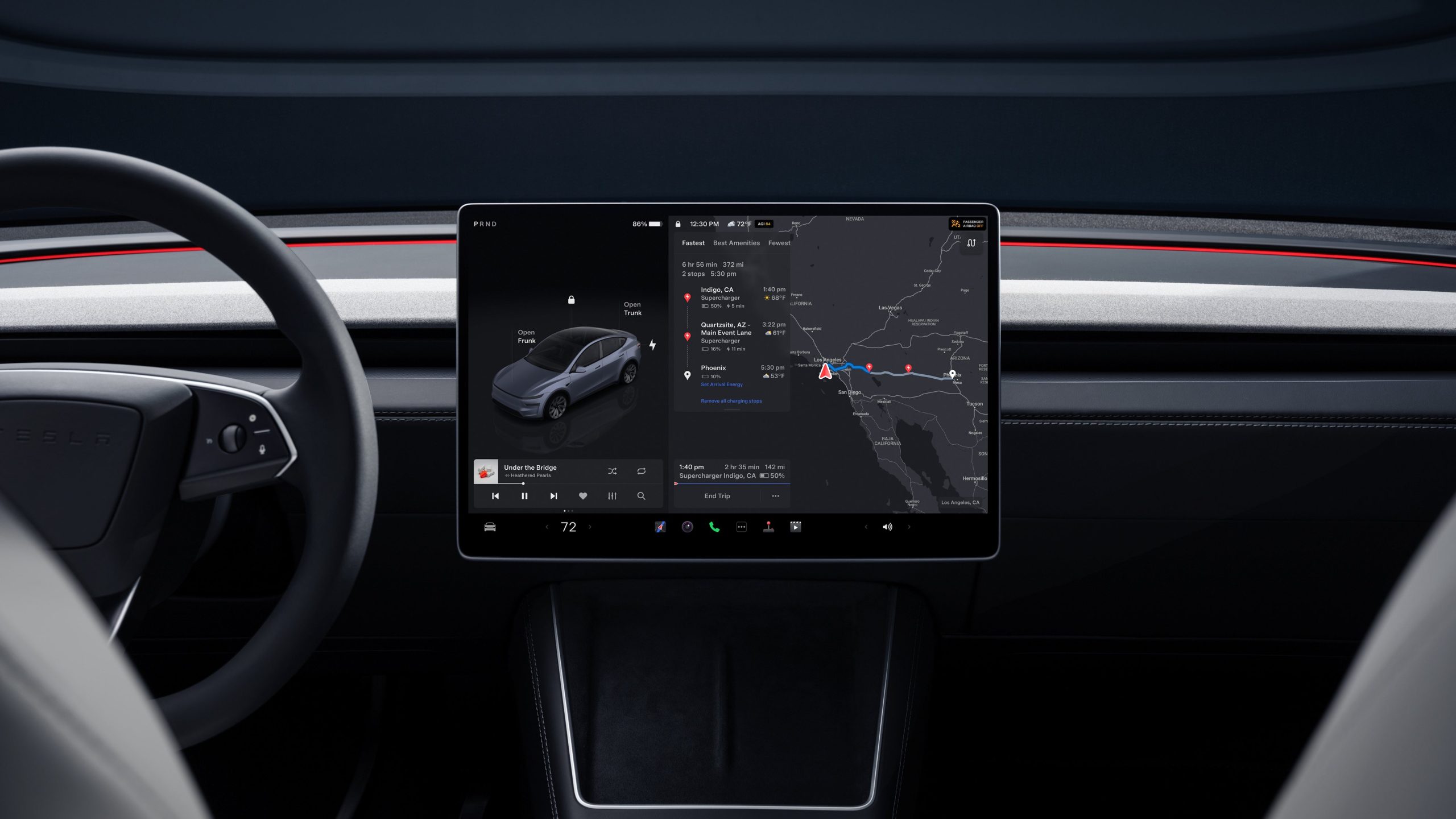
Tesla CEO Elon Musk has confirmed that the company will roll out a new feature for in-car Grok as it is rolling out to vehicles for the first time.
Grok was just recently added as a feature to Tesla vehicles within the past week, but owners are already requesting some small changes to make it more convenient to use.
Tesla debuts hands-free Grok AI with update 2025.26: What you need to know
The first is already on the way, Musk confirmed, as WholeMarsBlog requested a simple, but useful feature for Grok as it is used within Tesla vehicles.
Whole Mars requested that “Hey Grok” be used as a wake word, automatically activating the AI assistant without having to touch any buttons. Musk confirmed it is already in development and on the way to vehicles:
Coming
— Elon Musk (@elonmusk) July 16, 2025
This feature is incredibly similar to that of “Hey Siri” with iPhones and other iOS devices. The phone will recognize your voice and hear that prompt, automatically activating Siri. Apple’s assistant will then perform whatever task it is asked to perform. It’s a simple but effective performance feature.
Grok is already getting its first reviews from owners as it rolls out to owners for the first time. It is a long time coming, too. Tesla has been hinting that Grok would be enabled in the vehicles for a while now, and it just started its initial rollout last week.
After using @grok in my Tesla tonight, I’m insanely impressed.
I honestly went into it a bit skeptical on how useful it would actually be, but I asked it some real genuine questions and it nailed it every time.
Asked it if I take my Tesla to San Francisco next week, where… pic.twitter.com/R0QrK347vi
— Zack (@BLKMDL3) July 16, 2025
Hey @Tesla_Optimus … @grok wants to know if you’re free tonight pic.twitter.com/xXfSkg8M22
— Tesla (@Tesla) July 12, 2025
Grok is available in vehicles with the AMD chip and requires Premium Connectivity or a WiFi connection to use.
Elon Musk
Tesla reveals key detail of Supercharger Diner, but it’s bigger than you think
Tesla has finally released one key detail about the Supercharger Diner, and it is bigger than what it appears at face-value.
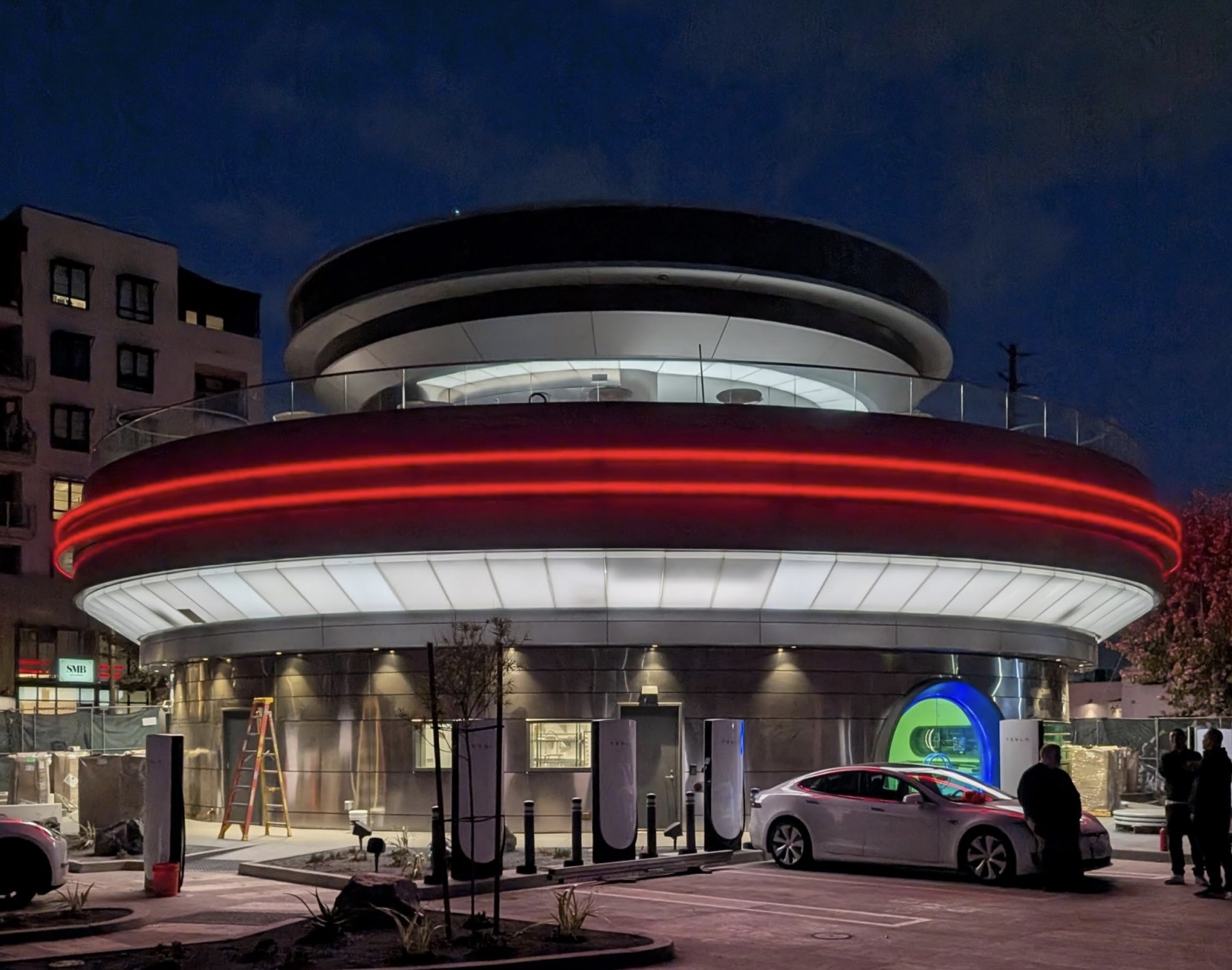
Tesla has revealed a key detail of its Supercharger Diner as its launch date appears to be nearing, based on what we are seeing at the site currently.
The Supercharger Diner is located on Santa Monica Boulevard in Los Angeles and was first proposed as an idea by CEO Elon Musk back in 2018. Musk envisioned a drive-in movie-style 1950s-inspired diner that would feature elements such as servers on roller skates, large movie screens, and a menu inspired by classic treats from several decades ago.
A project that first broke ground in 2023, the Supercharger Diner has been in development for over two years, as Tesla performed demolition work at the site back in February of that year.
It has slowly moved forward, and drone footage shot this week seems to show things are nearly up and running. Musk even mentioned that he had eaten at the Diner Supercharger this week.
There are still details that Tesla has yet to announce and confirm. The most important thing is regarding the menu that will be served at the diner.
Tesla has not hinted at what it will be making for patrons at the restaurant, but Musk commended the food and said the diner would be one of the coolest spots in LA.
🚨 Tesla has involved “almost every team at the company…in some form” in the development of the Supercharger Diner in Los Angeles https://t.co/wLC6t79vgu pic.twitter.com/o52SWWbYPd
— TESLARATI (@Teslarati) July 16, 2025
However, we now have details on another important thing about the restaurant: the hours.
Images taken by Aaron Cash of ABetterTheater.com show the diner will be open 24/7, as it appears on the front doors of the diner:
🚨 Tesla Diner in Los Angeles will be open 24/7 https://t.co/SlccUUlLIb pic.twitter.com/9I78ZGBdnz
— TESLARATI (@Teslarati) July 15, 2025
At first thought, it seems this will operate like any other diner, as many are open for 24 hours a day. Diners typically serve large menus with numerous options, catering to the tastes and moods of anyone who walks in.
People of all walks of life eat at diners, as the food is typically affordable, tasty, and available at any hour to serve those who are night owls or those who work non-typical schedules.
However, Tesla is a bit different, and it seems that this new venture into food service could eventually transition from human servers and cooks to robots, most notably the company’s in-house project of Optimus.
It is something straight out of a Star Wars movie. I can think of Obi-Wan Kenobi visiting Dex in his diner in Attack of the Clones to figure out where a poison dart was sourced from:
Eventually, Optimus will likely be working as an employee in the Tesla Diner, and 24/7 operation will be performed by the humanoid robot that aims to eliminate trivial tasks from humans.
-

 News4 days ago
News4 days agoTesla debuts hands-free Grok AI with update 2025.26: What you need to know
-

 Elon Musk17 hours ago
Elon Musk17 hours agoElon Musk’s xAI just posted the nerdiest job opening of all time
-
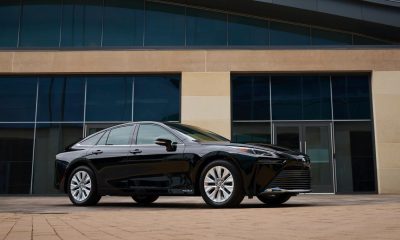
 News3 days ago
News3 days agoHydrogen Cars Were Supposed to Be the Future. Now Owners Are Suing Toyota
-

 News2 days ago
News2 days agoTesla Robotaxi has already surpassed Waymo in this key metric
-

 News2 weeks ago
News2 weeks agoTesla China breaks 8-month slump by selling 71,599 vehicles wholesale in June
-

 News2 days ago
News2 days agoThe Tesla Diner is basically finished—here’s what it looks like
-

 Elon Musk7 days ago
Elon Musk7 days agoxAI launches Grok 4 with new $300/month SuperGrok Heavy subscription
-

 Elon Musk3 days ago
Elon Musk3 days agoElon Musk teases Tesla’s “most epic demo” by end of year






